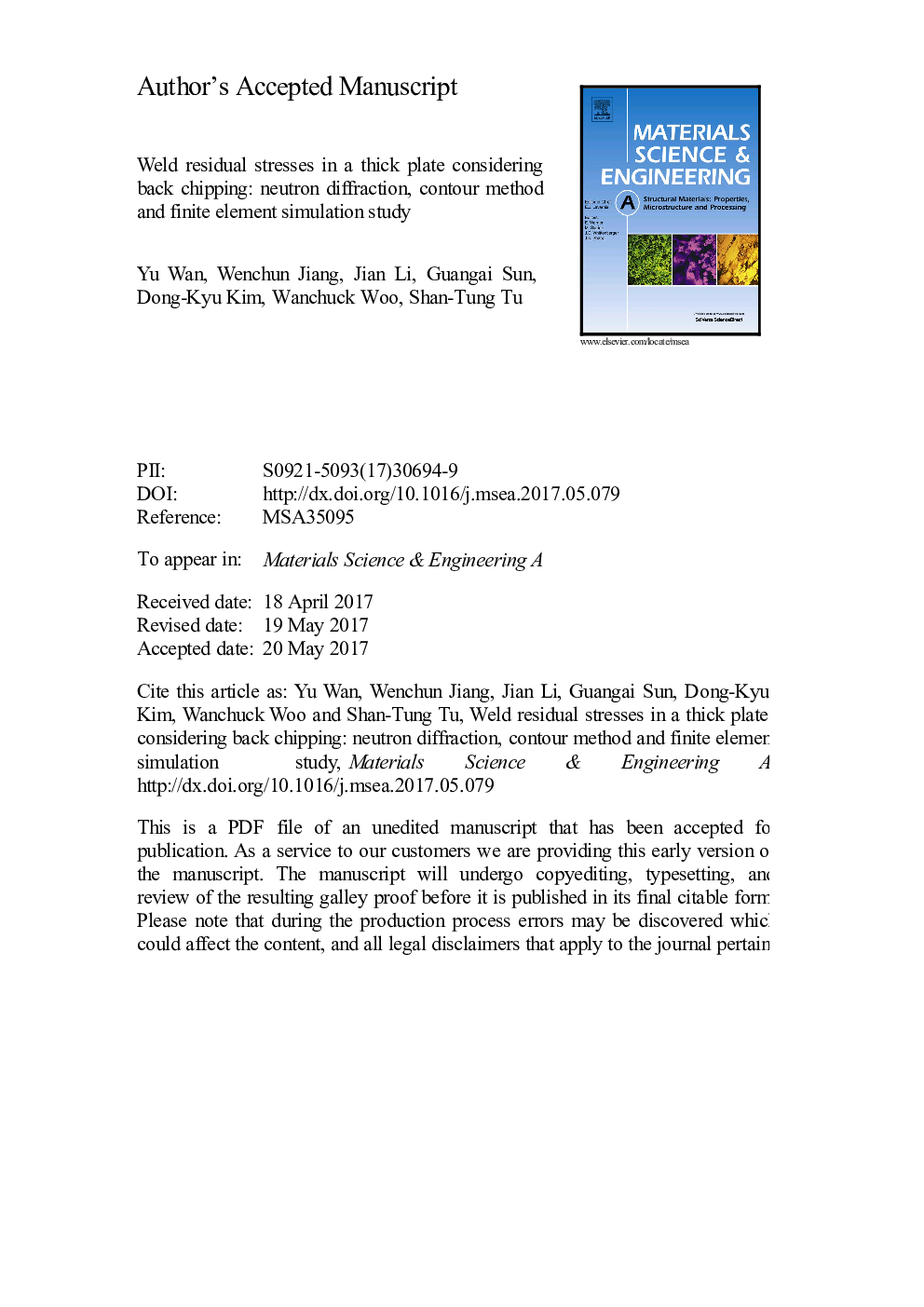| Article ID | Journal | Published Year | Pages | File Type |
|---|---|---|---|---|
| 5455621 | Materials Science and Engineering: A | 2017 | 45 Pages |
Abstract
Neutron diffraction measurement, contour method and finite element method have been combined together to study the distribution of weld residual stresses in a thick plate considering the effect of back chipping. The comparison among the three methods, the effect of back chipping and the formation mechanism of the residual stresses in the thick plate were analyzed. The results show that the residual stress distribution exhibits an “M” shape across the specimen width. Large tensile residual stresses were generated in the back weld and top weld layer. Back chipping has a great influence on the residual stress profile. It can change not only the distribution shape of residual stress but also the position of the peak value. The residual stresses increase with the increase in back chipping thickness. The residual stress distribution is mainly formed in the welding of back weld. As the layer number increases, the residual stress distribution in the main weld does not change obviously and only the stress values change.
Related Topics
Physical Sciences and Engineering
Materials Science
Materials Science (General)
Authors
Yu Wan, Wenchun Jiang, Jian Li, Guangai Sun, Dong-Kyu Kim, Wanchuck Woo, Shan-Tung Tu,
